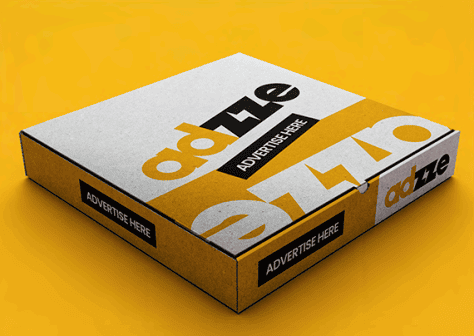Pizza box advertising has long been a creative and effective medium to capture attention. From bold designs to coupon placements, this form of advertising offers unparalleled reach into households. However, a niche yet powerful approach is emerging: collaborative advertising with complementary businesses.
This blog explores how collaboration between businesses—particularly in financial services and e-commerce—can elevate pizza box advertising to the next level. By sharing space and targeting diverse customer bases, these partnerships amplify engagement, reduce costs, and create a win-win scenario.
Why Collaborative Advertising Works
Collaborative advertising involves two or more businesses pooling resources and sharing advertising space to promote their products or services. On pizza boxes, this approach offers unique advantages:
Broader Reach: Partnering businesses benefit from cross-promotional efforts, expanding their customer base.
Cost Efficiency: Sharing advertising costs reduces the financial burden on individual companies.
Relevance: Pizza box advertising reaches customers at a relaxed moment—perfect for catching their attention with compelling offers.
The Mechanics of Collaborative Pizza Box Advertising
To execute collaborative advertising successfully:
Identify Complementary Businesses: Choose partners whose products or services align with your target audience but don’t compete directly. For instance, a financial services firm could collaborate with an e-commerce platform.
Design Integrated Campaigns: Create cohesive ads that showcase each partner’s value proposition while maintaining clarity.
Leverage Local Partnerships: Collaborate with neighborhood pizzerias to build trust and connect with local consumers.
Use Cases: Financial Services and E-Commerce on Pizza Boxes
1. Financial Services: Promoting Credit Card Rewards
Objective: A financial services firm aimed to promote its cashback credit card.
Strategy: Partnered with a local pizzeria chain to feature dual-branded ads on pizza boxes.
Highlighted exclusive offers, such as “Earn 5% cashback on dining, including your favorite pizza place.”
Included a QR code linking directly to the credit card application page.
Results: 20% increase in credit card applications during the campaign.
Positive feedback from customers who appreciated the relevant promotion.
2. E-Commerce: Boosting Sales with Exclusive Discounts
Objective: An online fashion retailer wanted to drive sales during a seasonal promotion.
Strategy: Collaborated with pizza chains to include promo codes for 20% off select items on every box.
Designed visually engaging ads featuring QR codes for quick access to the retailer’s website.
Incorporated messaging like “Your next style upgrade is just a slice away.”
Results: 35% spike in website traffic.
Over 10,000 promo codes redeemed within the first month of the campaign.
3. Fintech App: Driving App Downloads
Objective: A fintech app sought to increase downloads among young professionals.
Strategy: Partnered with high-end pizza outlets frequented by their target demographic.
Printed ads on pizza boxes promoting the app’s budgeting features and included an exclusive referral bonus for new users.
Used geofencing to send follow-up notifications to customers who scanned the QR code.
Results: 15% increase in app downloads within two weeks.
Enhanced brand awareness among a tech-savvy audience.
Best Practices for Collaborative Pizza Box Advertising
1. Align with the Right Partners
Choose businesses that share your target audience. A financial services company promoting student loans, for instance, could partner with pizza outlets near college campuses.
2. Prioritize Design Cohesion
Ensure the ad design integrates seamlessly, presenting both brands in a visually appealing manner without overwhelming the customer.
3. Focus on Clear CTAs
Call-to-actions (CTAs) such as “Scan for 15% Off” or “Apply Now for Rewards” guide customers toward immediate engagement.
4. Measure Results
Use tools like unique promo codes, QR codes, and tracking links to monitor campaign effectiveness and ROI.
Challenges in Collaborative Pizza Box Advertising
1. Balancing Brand Identity
Combining two distinct brands in one ad can dilute messaging if not handled carefully.
Solution: Maintain consistent brand elements, such as logos and color schemes, while ensuring clarity in the collaborative message.
2. Targeting the Right Demographic
Not all pizza customers will align with the ideal audience for both brands.
Solution: Choose pizzerias strategically, focusing on areas where your target demographic is prevalent.
3. Tracking Shared Campaigns
It can be tricky to determine which partner benefits most from the campaign.
Solution: Use separate tracking mechanisms (e.g., individual QR codes) for each brand to gather accurate data.
The Long-Term Benefits of Collaborative Advertising
Collaborative pizza box advertising does more than drive short-term results:
Builds Relationships: Strengthens ties between complementary businesses, paving the way for future partnerships.
Enhances Brand Perception: Shows consumers that the brand values innovation and collaboration.
Expands Audience Reach: Introduces brands to new customer segments they might not have reached otherwise.








